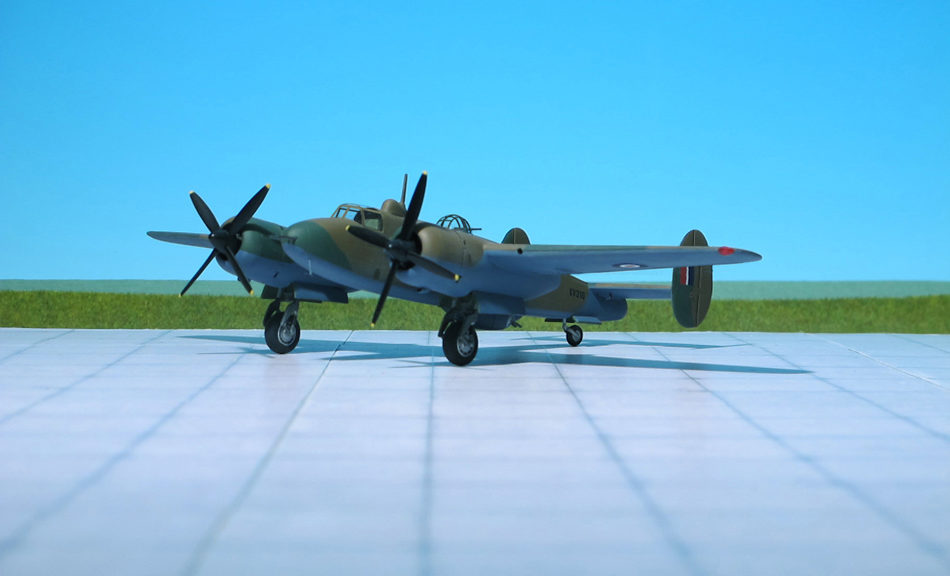TYPE: Medium bomber
ACCOMMODATION: Crew of two
POWER PLANT: Two Bristol “Centaurus” IX radial engines, rated at 2,520 hp each
PERFORMANCE: 336 mph at 12,000 ft
COMMENT : In early 1939 Bristol suggested a bomber variant of the “Beaufighter” with their Bristol “Hercules” engines. British policy at the time was an expectation for medium bombers to be provided from the US allowing British industry to concentrate on heavy bomber designs but a design was requested preferably based on an existing design which meant working with the Bristol “Beaufort” or “Beaufighter”.
Air Ministry specification B.7/40 called for a medium bomber to replace the Bristol “Blenheim”. The specification stipulated a speed of at least 300 mph at 5,000 ft, a normal load of 500 kg of bombs and a center turret armed with at least two 12.7 mm machine guns. Only Armstrong Whitworth Company tendered a full design but it did not meet with approval. So when Bristol brought their Type 162 (tentatively named “Beaumont”), which was fortunately well matched to B.7/40 specification, to the Air Staff, this led to a request to complete a mockup in 1940 and then a confirmed contract for three prototypes in February 1941. The “Beaumont” was based on the rear fuselage and tail of a “Beaufighter”, with a new center and front fuselage. The armament was a mid-upper turret with four machine guns, four more machine guns firing forward and two firing to the rear.
Construction began in late 1940, with a new Air Ministry Specification B.2/41 to be written around it. Changes in the requirements, removing dive bombing and ground attack support which incoming US bombers were expected to be capable of and increasing the performance to allow for the future, meant the “Beaumont” would no longer suffice. The changes in performance, requiring a bomb load of 4,000 lb, a speed of 360 mph and a range of 1,600 miles meant a redesign by Bristol to use the Bristol “Centaurus” engine.
The Bristol redesign with a larger wing and the more powerful engines was the Bristol ”Buckingham”. It had gun installations in the nose, dorsal and ventral turrets. Generally conventional in appearance, one unusual feature was that the bomb-aimer/navigator was housed in a mid-fuselage ventral gondola, resembling those on the earlier German Heinkel He 111H and American Boeing B-17C and -D in appearance. This was part of an attempt to give all the crew positions unobstructed views and access to each other’s positions. The bomb bay could hold up to 2,000 kg bombs. The rear of the gondola had a hydraulically powered turret with two Browning machine guns. The Bristol-designed dorsal turret carried four Brownings. A further four fixed, forward-firing Brownings were controlled by the pilot. Following more changes, specification B.2/41 was replaced by B.P/41. An order for 400, at an initial rate of 25 per month, was made with deliveries expected in March 1943. The first flight took place on 4 February 1943. During testing, the “Buckingham” exhibited poor stability which led to the enlargement of the twin fins, along with other modifications. The Bristol “Buckingham B1” was first flown 12 February 1944 with “Centarus” VI or XI engines, 400 ordered but reduced first to 300 then to 119, with only 54 built as bombers. Overtaken by events, it was mainly used primarily for transport and liaison duties (Ref.: 24).












